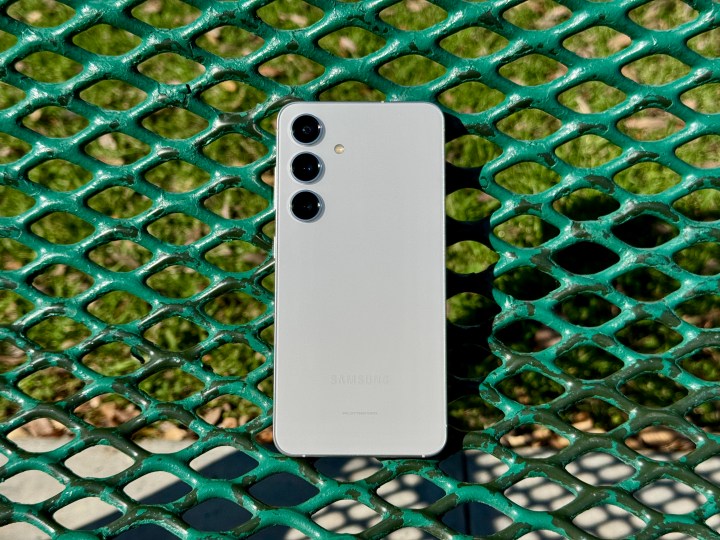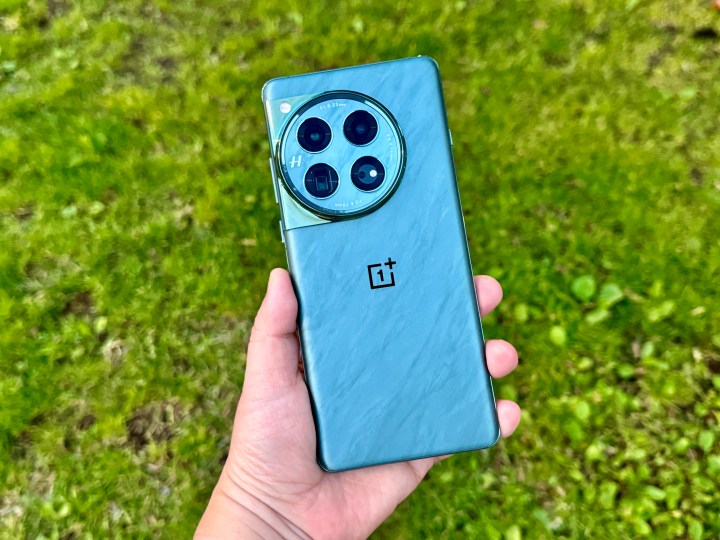If you’re in the market for a new phone, whether it’s for yourself or a loved one, you may be considering the iPhone 16 Pro from Apple. After all, it just came out, and it’s packed with the latest and greatest from the fruit company. That means an A18 Pro chip for fast performance, an upgraded 5x telephoto camera, the new Camera Control button, Apple Intelligence features in iOS 18, and more.
But what if we told you there are some better options out there? And some offer even better features or are a better value? Here are five alternatives to consider before you buy the iPhone 16 Pro.
iPhone 16

You might wonder why go for the base model this year instead of the Pro version. And that’s because Apple made the base iPhone 16 that good.
If one of the reasons you’re considering the iPhone 16 Pro is because of the size, the iPhone 16 is a bit smaller, too, with a 6.1-inch Super Retina XDR display instead of 6.3 inches like the Pro. While it only has a 60Hz refresh rate, truth be told, most people can’t tell the difference between 60Hz and 120Hz, and using the phone in day-to-day scenarios won’t be affected much. The colors still look bright and vibrant, the text is sharp and crisp, and the blacks are rich and deep.
The iPhone 16 also gets the Action button that debuted last year on the iPhone 15 Pro models, replacing the old silent/ring toggle. This configurable button lets you map a shortcut to the camera, flashlight, translate, voice recording, or anything else through the Shortcuts app. The iPhone 16 also gets the same Camera Control button found on the iPhone 16 Pro.
Apple also redesigned the camera layout on the iPhone 16, going back to a vertical camera layout for Spatial Photos and Video for Apple Vision Pro. The new design is clean and elegant, and Apple also upgraded the ultrawide camera. You get a 48MP primary camera and a 12MP ultrawide lens with autofocus, which can take macro photos.
And let’s face it — the iPhone 16 has the best new colors with the Teal, Ultramarine, and Pink hues that are bright, bold, and fun. The iPhone 16 Pro lacks the same kind of vibrant color that the base model offers. Plus, the iPhone 16 starts at $799, so you can save some money if you don’t need the 1TB storage, 120Hz refresh rate, or telephoto camera.
Google Pixel 9 Pro

For those who don’t mind switching to Android, there is also the Google Pixel 9 Pro — the best Android alternative to the iPhone 16 Pro.
Google refreshed the entire Pixel 9 line this year, and it looks better than ever. It’s the same size as the iPhone 16 Pro with a 6.3-inch Super Actua OLED display, but the brightness can reach up to 3,000 nits (compared to the iPhone’s 2,000 nits) and has a 120Hz refresh rate.
While the Pixel 9 Pro doesn’t have the fancy Action button or Camera Control, it does have more impressive specs. Inside is the Tensor G4 with 16GB RAM (compared to the iPhone 16 Pro’s 8GB) and Android 14 out of the box with Google Gemini AI features. It will receive seven years of OS, security, and Pixel Drop updates, and the battery will get you through an entire day.
As far as cameras go, Google’s is more impressive on paper. You have a triple-lens camera system with a 50MP primary camera, a 48MP ultrawide lens, and a 48MP telephoto with 5x optical zoom. The selfie camera is also quite nice at 42MP, compared to the iPhone 16 Pro’s 12MP sensor.
And let’s talk about colors. Google made the Pixel 9 Pro in a beautiful Rose Quartz pink, which is already a step above the offerings from Apple in the iPhone 16 Pro. If you want a pink pro phone, the answer is easy: go with the Pixel 9 Pro.
Google Pixel 9

Similarly to the iPhone 16 line, Google did a fantastic job with the base model Google Pixel 9. So, if you want to save some money and don’t mind switching over to Android, then the Pixel 9 is an excellent option to consider, too.
The Pixel 9 is the same size as the iPhone 16 Pro, and though its display isn’t quite as high-def as the Pixel 9 Pro, it still has a 120Hz refresh rate and 2,700 nits of peak brightness.
Inside the Pixel 9 is the Tensor G4, but it only has 12GB RAM compared to the 16GB in the Pixel 9 Pro. Still, that’s more than the iPhone 16 Pro’s 8GB. With 12GB RAM, the Pixel 9 has blazing-fast performance and power efficiency. It even has the same 4,700mAh battery size as the Pixel 9 Pro, so it will last all day.
Regarding cameras, the Pixel 9 only has a dual system compared to its Pro siblings, but it still impresses. It has a 50MP primary camera and a 48MP ultrawide lens. The selfie camera is a 10.5MP sensor. Since the Pixel line uses Google’s computational photography processes to help you achieve the perfect shot, it’s hard to take a bad photo with the Pixel 9, even if it lacks the telephoto camera.
Google also brought some fun colors to the Pixel 9 lineup, with the Peony pink and Wintergreen. It also starts at just $799, and you can typically find more deals on Google Pixel phones than the iPhone, thus possibly saving even more money.
Samsung Galaxy S24

While the Samsung Galaxy S25 is just over the horizon, the Galaxy S24 is still a pretty darn good phone.
Since the Galaxy S24 has a 6.2-inch display, it’s one of the smallest Android phones you can get in 2024. It’s lightweight and comfortable to hold, too, which is nice. But don’t be fooled — that 6.2-inch LTPO AMOLED display with a 120Hz refresh rate can get down to 1Hz in dimly lit environments. And it can get up to 2,600 nits in peak brightness. Though it’s important to note that Samsung phones can sometimes have overly vibrant displays, but you can tone that down by adjusting the setting to Natural for a more balanced color profile.
The Galaxy S24 has Snapdragon 8 Gen 3 for Galaxy inside, which means fast performance and great power efficiency. It only has 8GB RAM, which is on par with the iPhone 16 Pro. Still, the Snapdragon chip is very good and should be able to handle your tasks without a problem.
The cameras on the Galaxy S24 are also very solid. The triple-lens camera setup on the back includes a 50MP primary shooter, a 10MP telephoto camera with 3x optical zoom, and a 12MP ultrawide camera. So, even though this is a base model, you still get the telephoto lens, which is something both Apple and Google don’t do. And while previous Samsung phones tend to overdo it with the color saturation, the S24 toned down on that, so the photos aren’t quite as over-saturated as before. This is, of course, a personal preference.
There are plenty of AI goodies on the Galaxy S24, too, and Samsung has some fun, exclusive colors if you buy directly. And with the S25 just a few months away, you can get this one for very cheap with deals and trade-in offers.
OnePlus 12

Like Samsung, OnePlus is set to release the OnePlus 13 soon, as it was recently announced in China, but not a U.S. release just yet. Despite that, the OnePlus 12 is still a great phone to consider.
If you don’t mind going a little big, the OnePlus 12 is a great value. It has a 6.8-inch LTPO AMOLED display with a 120Hz refresh rate and an eye-searing 4,500 nits of brightness. There’s just one catch, though — the display is curved along the edges, so it may lead to some accidental touches and gestures if you aren’t used to such a display. But otherwise, this is one of the best displays you can get on a smartphone.
On the inside, the OnePlus 12 packs in Snapdragon 8 Gen 3, and depending on your storage configuration, you can get between 12GB to 16GB RAM. That’s more than enough RAM for a smartphone for most people, so this is a great value. And with the phone’s massive 5,400mAh battery, this is a two-day phone if you watch your usage. Speaking of battery, it charges up at 80W wired in the U.S. (100W globally), and even supports up to 50W wireless charging. Even when you need to plug it in, it doesn’t take long at all.
For cameras, the OnePlus 12 has Hasselblad color tuning for the best possible pictures. It has a 50MP primary camera, a 64MP periscope telephoto camera with 3x optical zoom, and a 48MP ultrawide camera. Even the selfie camera is a mighty 32MP. And with Hasselblad, you’ll get fantastic photos no matter the situation.
OnePlus also has some of the more unique color offerings on the market, with distinctive patterns and textures. It starts at $800, but there are some great trade-in deals that OnePlus offers on its site, so you can get it for even less. It’s one of the best values you can buy for smartphones.




